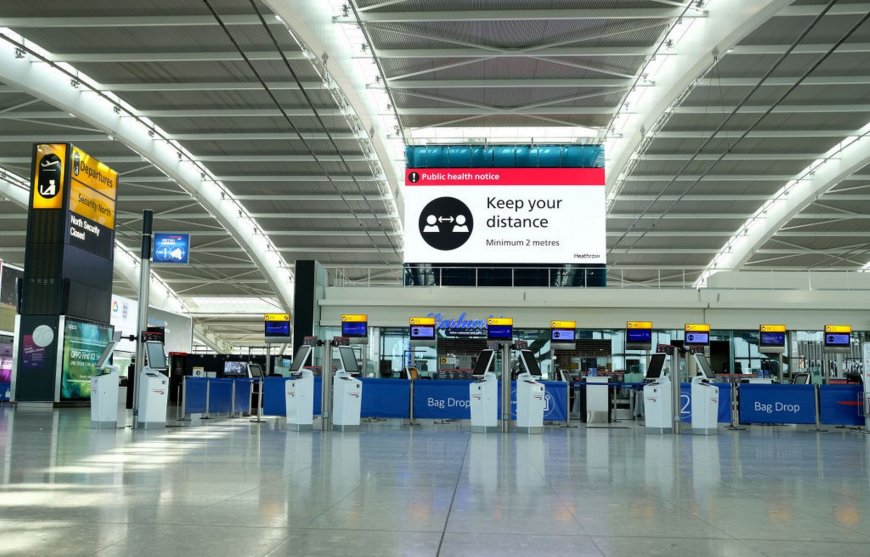The Ultimate Guide to Airline Terminals: Everything You Need to Know
Airline terminals are the heart of every airport, serving as the gateway for travelers to embark on their journeys. These terminals are more than just waiting areas; they are hubs of activity that include check-in counters, security checkpoints, lounges, shopping centers, and dining options. Understanding how airline terminals operate and what they offer can significantly enhance your travel experience.

Air travel has become an essential part of modern life, connecting people across the world in just a matter of hours. Whether you're a frequent traveler or an occasional flyer, navigating an airport terminal efficiently can significantly enhance your journey. Airline terminals serve as the gateway to your travels, providing facilities for check-in, security screening, shopping, dining, and boarding. In this guide, we will explore everything you need to know about airline terminals, including their layout, services, and tips for seamless navigation.
Understanding the Structure of Airline Terminals
Most airline terminals are designed with a clear flow of movement in mind, ensuring passengers can proceed from check-in to their departure gate as smoothly as possible. While layouts vary from airport to airport, they generally consist of the following key areas:
1. Check-In and Baggage Drop-Off
Upon arrival at the airport, the first step in your journey is usually the check-in area. Many airlines offer multiple check-in options, including self-service kiosks, online check-in, and traditional counters with airline staff assistance. If you have checked baggage, this is where you'll drop it off before proceeding to security.
2. Security Screening
Security screening is a crucial part of airport operations, ensuring the safety of passengers and staff. Passengers are required to go through body scanners and have their carry-on luggage scanned for prohibited items. To speed up the process, travelers should prepare by removing belts, jackets, and electronic devices before entering the screening area.
3. Duty-Free Shopping and Dining
Once through security, passengers enter the airside area of the terminal, where duty-free shops and restaurants are located. Many international airports boast a wide array of retail stores, offering everything from luxury goods to travel essentials. Similarly, dining options range from fast food outlets to fine dining restaurants, catering to all tastes and dietary needs.
4. Boarding Gates and Lounges
The final stop before boarding is the gate area, where passengers wait for their flight. Some travelers, particularly those flying in premium classes or holding airline status, have access to exclusive lounges that provide added comfort, complimentary food and beverages, and Wi-Fi access.
How Airline Terminals Differ Worldwide
No two airline terminals are the same, and airports around the world have adopted different architectural styles, operational efficiencies, and passenger experiences. Here are a few standout examples:
Changi Airport (Singapore)
Regularly ranked among the best airports in the world, Singapore Changi Airport features stunning gardens, movie theaters, and even a rooftop pool, making it a traveler’s paradise.
Heathrow Airport (London)
As one of the busiest international airports, Heathrow Terminal 5 serves as a major hub for British Airways, offering an array of lounges, luxury shopping, and efficient transit options.
Los Angeles International Airport (LAX)
LAX is known for its Tom Bradley International Terminal, which has been upgraded to accommodate the growing demand for international travel with state-of-the-art facilities.
Navigating Airline Terminals Like a Pro
For travelers looking to improve their airport experience, here are some expert tips:
-
Arrive Early: Arriving at least two hours before domestic flights and three hours before international flights helps ensure a stress-free experience.
-
Use Mobile Check-In: Many airlines offer mobile boarding passes, reducing the need for paper tickets and saving time at the airport.
-
Pack Smartly: Keep essentials like travel documents, chargers, and snacks in your carry-on for easy access.
-
Follow Signage: Airports have clear signs in multiple languages to guide travelers; follow them to avoid confusion.
-
Stay Updated: Flight information can change, so keep an eye on airport monitors and airline apps for real-time updates.
For a more detailed look at specific airport terminals and their unique features, check out airline-terminals, a comprehensive resource dedicated to helping travelers navigate airports worldwide.
The Future of Airline Terminals
As technology advances, the future of airline terminals is expected to evolve significantly. Innovations such as biometric check-in, automated baggage handling, and AI-driven customer service are already shaping the passenger experience. Additionally, sustainable airport designs are being prioritized, with many new terminals incorporating energy-efficient technologies and eco-friendly materials.
In conclusion, airline terminals play a vital role in the overall travel experience, and understanding their layout and services can greatly enhance any journey. Whether you’re traveling for business or leisure, knowing what to expect at the airport ensures a smooth and enjoyable start to your trip.
What's Your Reaction?























